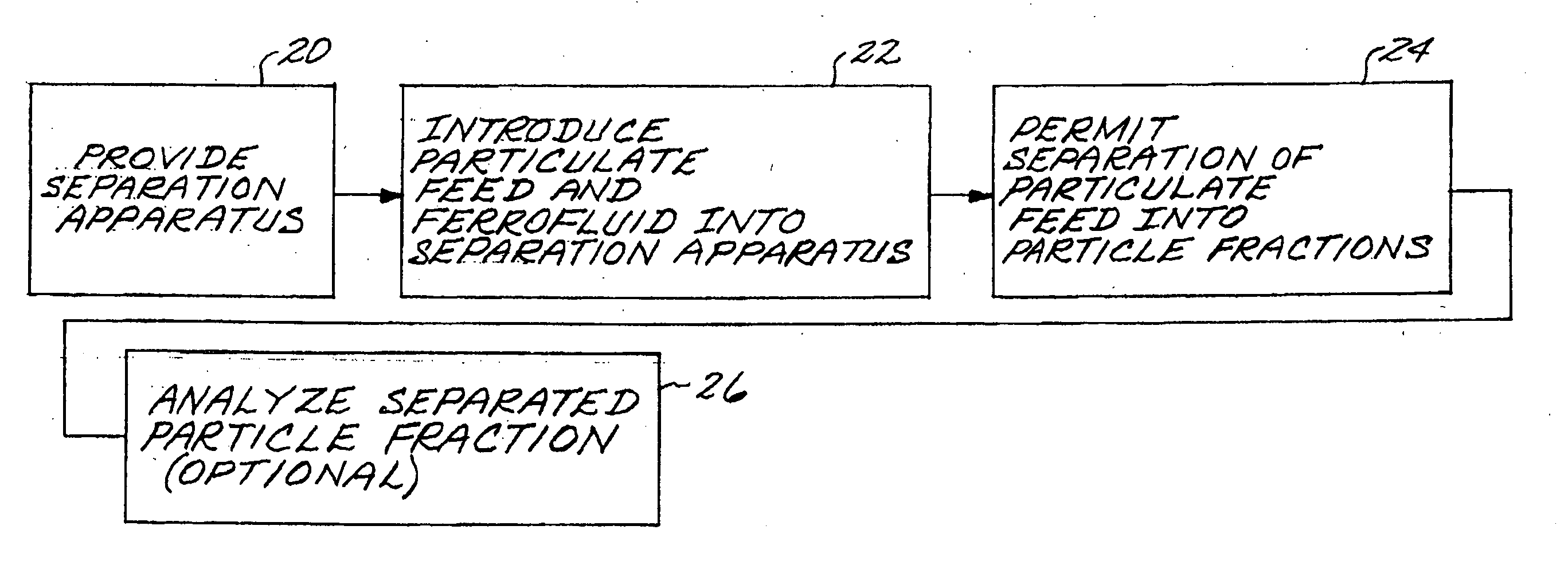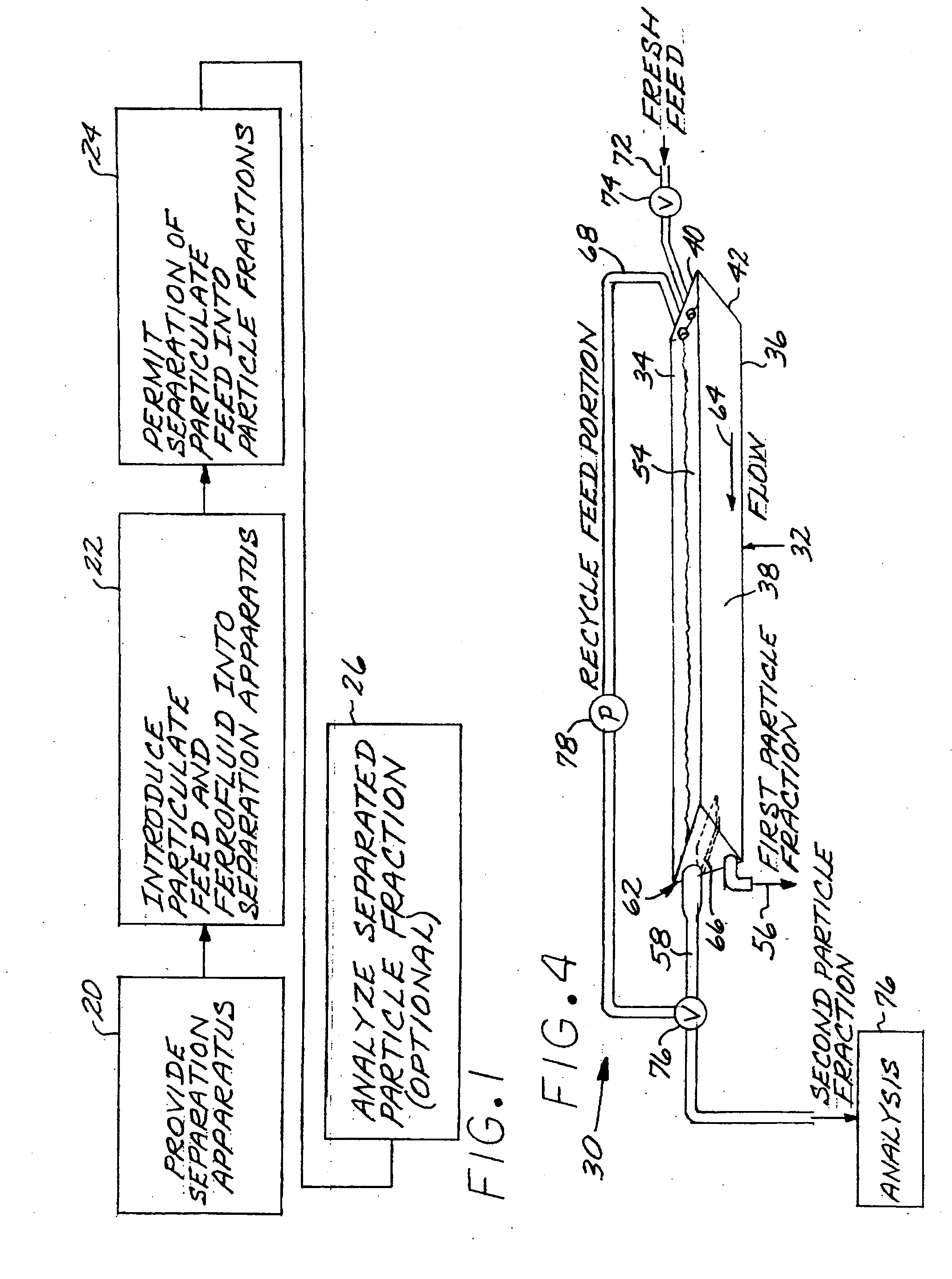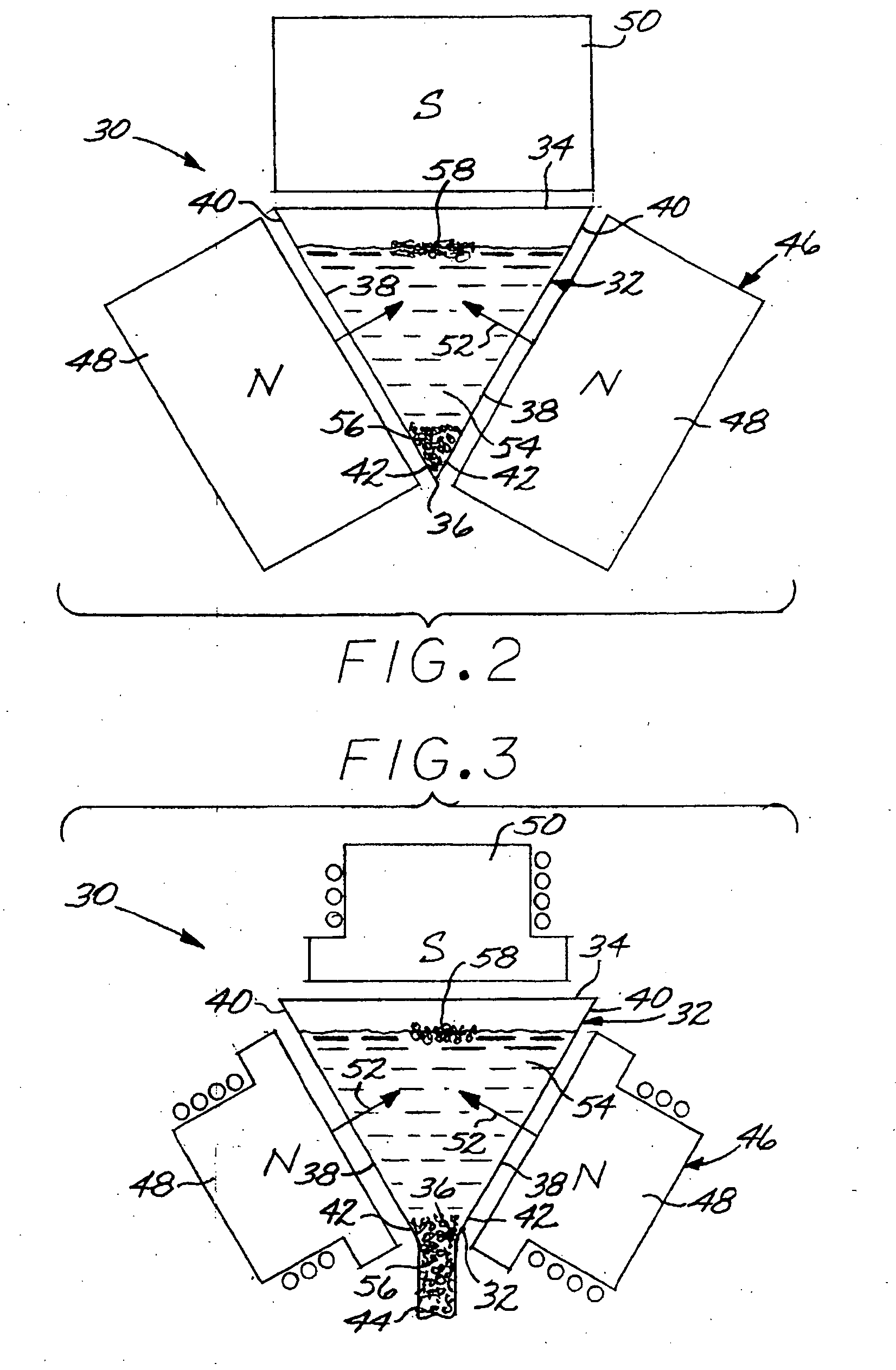Method for magnetic/ferrofluid separation of particle fractions
a magnetic/ferrofluid and particle fraction technology, applied in the direction of magnetic separation, high-grade magnetic separators, chemistry apparatuses and processes, etc., can solve the problems of difficult cleaning of the apparatus, complex structure and fragile available magnetic separation apparatus, and inability to accept or inacceptable ceramic particles, etc., to achieve easy collection, easy cleaning and preparation
- Summary
- Abstract
- Description
- Claims
- Application Information
AI Technical Summary
Benefits of technology
Problems solved by technology
Method used
Image
Examples
Embodiment Construction
[0018]FIG. 1 depicts in block diagram form an embodiment of a method for separating a particulate feed comprising a first particle type and a second particle type. The method comprises first providing a separation apparatus 30. Three embodiments of the separation apparatus 30 are depicted in FIGS. 2-4. In each case, the separation apparatus 30 comprises a separation vessel 32 having a top 34 and a bottom 36. The separation vessel 32 includes inwardly sloping side walls 38. That is, there is a greater spacing between the side walls 38 at their top ends 40 than at their bottom ends 42. In the embodiment of FIG. 2, the bottom 36 of the separation vessel 32 is closed. In the embodiment of FIG. 3, the bottom 36 of the separation vessel 32 has a tube 44 extending downwardly therefrom. The separation vessels 32 of the embodiments of FIGS. 2 and 3 may be troughs that extend out of the plane of the illustration, or they may be conical (FIG. 2) or funnel-shaped (FIG. 3), or any other operable...
PUM
 Login to View More
Login to View More Abstract
Description
Claims
Application Information
 Login to View More
Login to View More - R&D
- Intellectual Property
- Life Sciences
- Materials
- Tech Scout
- Unparalleled Data Quality
- Higher Quality Content
- 60% Fewer Hallucinations
Browse by: Latest US Patents, China's latest patents, Technical Efficacy Thesaurus, Application Domain, Technology Topic, Popular Technical Reports.
© 2025 PatSnap. All rights reserved.Legal|Privacy policy|Modern Slavery Act Transparency Statement|Sitemap|About US| Contact US: help@patsnap.com



